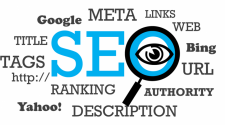2016 marks an exciting time to start an online business. With real estate and overhead costs soaring for many small business owners, creating an eCommerce website offers a viable alternative to brick & mortar businesses that have to rely on traditional marketing as well as word-of-mouth tactics to get customers in the door. The eCommerce market grows year by year and is estimated to be worth $3.02 trillion in just three years. However, while you may be itching to start your online mom & pop store or boutique, there are a few essential components that can not only drive revenue but keep happy customers returning for more!
Defined Branding
According to The Atlantic, there were fewer than 3,000 websites online in 1994. By 2014, that number swelled to over 1 billion. That’s a 33-million percent increase in just one decade! With that in mind, it’s vital that online store owners make themselves stand out from the crowd. To accomplish this, you don’t need to be a digital soothsayer, but you’ll need to understand some basics of branding and design.
You’ll need to brand and style your website in a way that makes a statement but doesn’t distract from the online shopping experience. Consider the tactics of major companies such as Adidas, The Gap, or Walmart. What do all these companies’ eCommerce sites have in common? They all display distinctive logos and color schemes. These fundamental visual elements implicitly cultivate an experience not completely dissimilar to real-world stores.
Deals and Shipping Incentives

Since digital consumers are inundated with countless stores, they’ll need some extra incentive to stick around and return for future orders. While you should prioritize on providing distinct, high-quality products, you should also consider how you’ll incentivize customers to check-out instead of abandoning their carts.
That’s why all online store owners should routinely provide seasonal sales and shipping deals. If you’re using a major eCommerce platform such as Magento or Shopify, you can easily create a coupon code redeemable for a certain percentage or currency amount taken out of the customer’s final cost. Or better yet, offer free shipping! Even major companies like IBM experience upwards of 68% in cart abandonment, so it pays to keep your customers happy with these added offers.
A Mobile-Friendly Version
The internet has evolved drastically in the past few years. Along with a rapid increase in shoppers taking their business online, the number of customers using mobile devices may also be shocking to store owners. As of 2015, Internet Retailer found that a full 30% of online consumers were shopping from a mobile device. Just as you wouldn’t want to ignore a significant amount of foot traffic from entering your brick & mortar store, you wouldn’t want to limit online customers from having the best possible experience when shopping on your eCommerce site.
Make sure your eCommerce store has a mobile version that’s easily navigable and can fit several different, yet common screens like those found in iPhone and Android phones as well as tablets. Enhance the readability of any copy on your website and ensure that buttons are easily clickable on touch screens. These details affect your mobile site’s usability and will drastically enhance your customers’ experience.
Strategic Marketing
So, you’ve set up shop and have a fully branded, mobile-friendly website ready to service customers from all over the world. There’s only one problem. No one’s heard of your business.
To gain visibility online, your store will need some serious strategic planning and multi-channel marketing. These days, you won’t be able to get customers without a dedicated PPC (pay-per-click) campaign and an SEO-optimized website that search engines such as Google will index and prioritize over your competition. While it’ll be an uphill challenge for small mom & pop operations, there are digital marketing firms that can assist businesses of all sizes. Companies like LA-based Coalition Technologies specialize in giving small businesses a competitive edge.
While your PPC and SEO campaigns will generate some initial digital foot traffic, you should also invest in social media and email newsletters to keep customers coming back.
Dynamic Content
Along with your social media presence, your online store will thrive on the creative touches that will energize your customer base. Write and maintain an active blog with content that your customers love. Apparel companies can easily tap into the burgeoning online fashion journalism field with the latest styling tips and trends. B2B stores can appeal to professionals and clients with news relevant to their industry. Whatever your business is selling, there are countless ways to appeal to and engage your customers. Now, open up shop and welcome your new customers!















